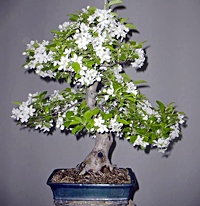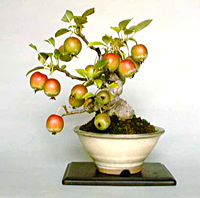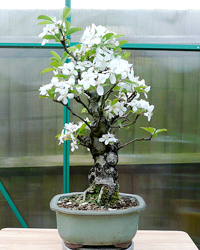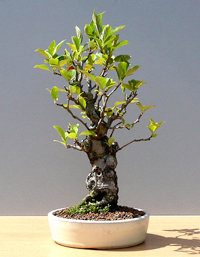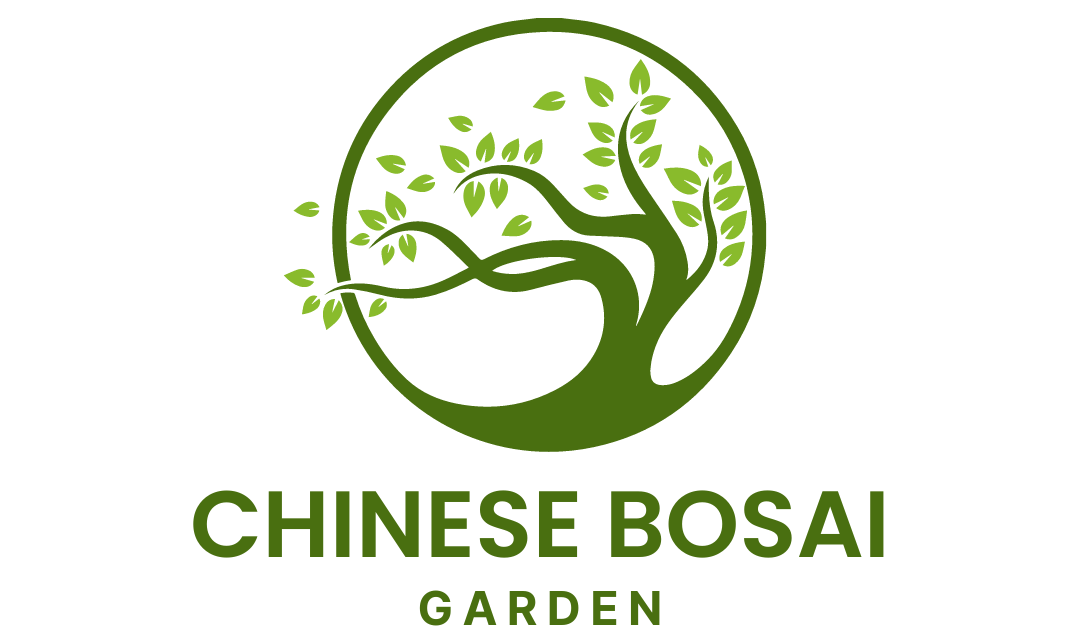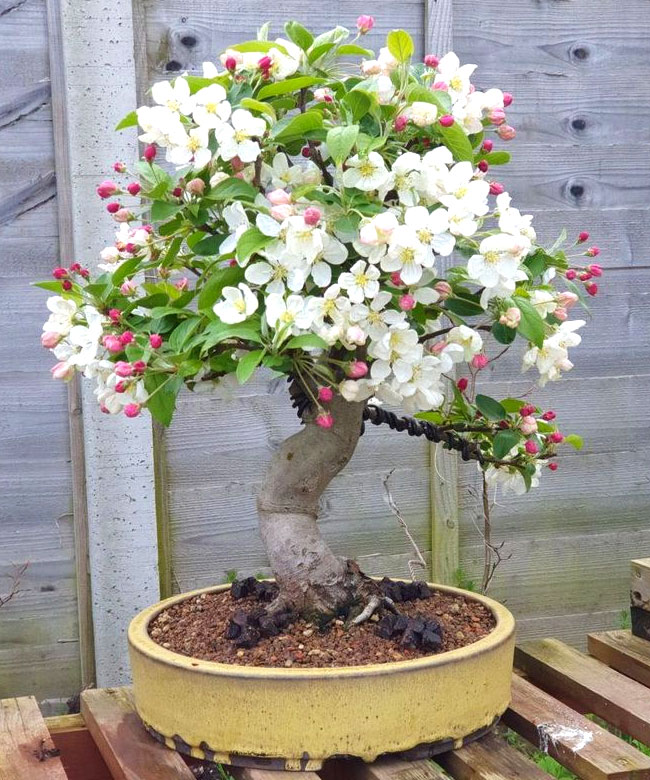
The Nagasaki Crabapple Bonsai Tree, scientific name Malus cerasifera, belongs to the Rosaceae family. It is one of the most popular varieties of bonsai due to its fragrant pink and white flowers.
Showy flowers are followed by an abundant display of red fruit in the fall. It is very easy to grow and is quite pest and disease-resistant.
Quite hardy tree that needs to be grown outdoors so it can get cold temperature exposure during winter. It is a deciduous tree, meaning it will loose its leaves in the winter.
Additional Information
Family: Rosaceae
Scientific name: Malus cerasifera
Common Names: Nagasaki Crabapple
Origin: Native to Japan but is used for bonsai all over the world.
Appearance: Has brown-gray think bark and small oval green leaves that change colors in the fall to yellow, orange, and red. Winter brings a nice twiggy skeletal outline punctuated by the fruit which persists throughout the winter.
Flowering: Produces showy pink and white flowers that are followed by small red apples.
Outdoor/Indoor Use: Outdoors. Needs to be exposed to cold weather during winter months.
Light Requirements: Prefers full sun to semi-shade. Needs protection from direct sunlight during hot summer months.
Water Requirements: Provide plenty of water when fruiting. Requires less water during winter months. Don not allow the soil to dry out completely.
Pruning/Training: Pinch back new shoots to two leaves in the spring and late summer. Prune after blooming is over in the fall. Make sure to prune suckers as they appear. Leaf-cutting in the spring will help you reduce leaf size even more. Trees in training that require maximum growth can be left unpruned until leaf-fall.
Bonsai Style: You can use any style except for broom, cascade, and formal upright.
Fertilizing: Feed with well-balanced bonsai fertilizer every two weeks after the blooming is over. Continue feeding until the end of the summer.
Repotting: This needs to be repotted every year in the late winter or early spring before buds develop. Sargent Crabapple soil with good drainage. Regular bonsai soil mix will work fine.
Hardiness: Grows best in the USDA Zones 4 – 8a. Because it is so hardy, it needs to be grown outdoors.
Insects and Diseases: Aphids, Red spider mites, caterpillars, apple scab, and mildew.
Propagation: By seeds or air-layering.
Buy Nagasaki Crabapple Bonsai »
